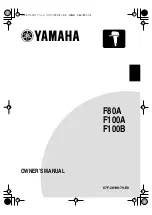
13
NOTE!
When you install DIMM module fully into the DIMM socket, the eject tab should be
locked into the DIMM module very firmly and fit into its indention on both sides.
WARNING!
If the SDRAM CLOCK is set at 133MHz, you must use PC133-compliant
DIMMs. When this motherboard operates at 133Mhz, most system will not even
boot if nonPC133-compliant SDRAM modules are used because of
the strict timing issues. If your DIMMs are not PC133-compliant, set the SDRAM
clock at 100MHz to ensure system's stability.
2-5 Expansion Cards
WARNING!
Turn off the power when adding or removing expansion cards or other system
components. Failure to do so may cause severe damage to both your
motherboard and expansion cards.
2-5-1 Procedure For Expansion Card Installation
1. Read the documentation of your expansion card and make any necessary
hardware or software setting, such as jumpers, for your expansion card.
2. Remove the chassis cover and the bracket plate on the slot you intend to use.
3. Align the card with slot and insert the card firmly.
4. Secure the card in the slot with the screen you remove above.
5. Replace the chassis cover.
6. Set up the BIOS if necessary.
7. Install the necessary software driver for your expansion card.
2-5-2 Assign IRQs For Expansion Card
Some expansion cards need an IRQ to operate. Generally, an IRQ must be
exclusively
assigned to one. In a standard design, there are 16 IRQs but most of them are
already in use.
Standard Interrupt Assignments
IRQ Priority
Standard
function
0 1
System
Timer
1 2
Keyboard
Controller
2 N/A
Programmable
Interrupt
3 *
11
Communications Port (COM2)
4 *
12
Communications Port (COM1)
5 *
13
Sound Card (sometimes LPT2)












































